Function Pointers - Everything you need to know!
Function pointers are pointers that point to code. When these are dereferenced, the fetched data is treated like instructions and the CPU executes them.
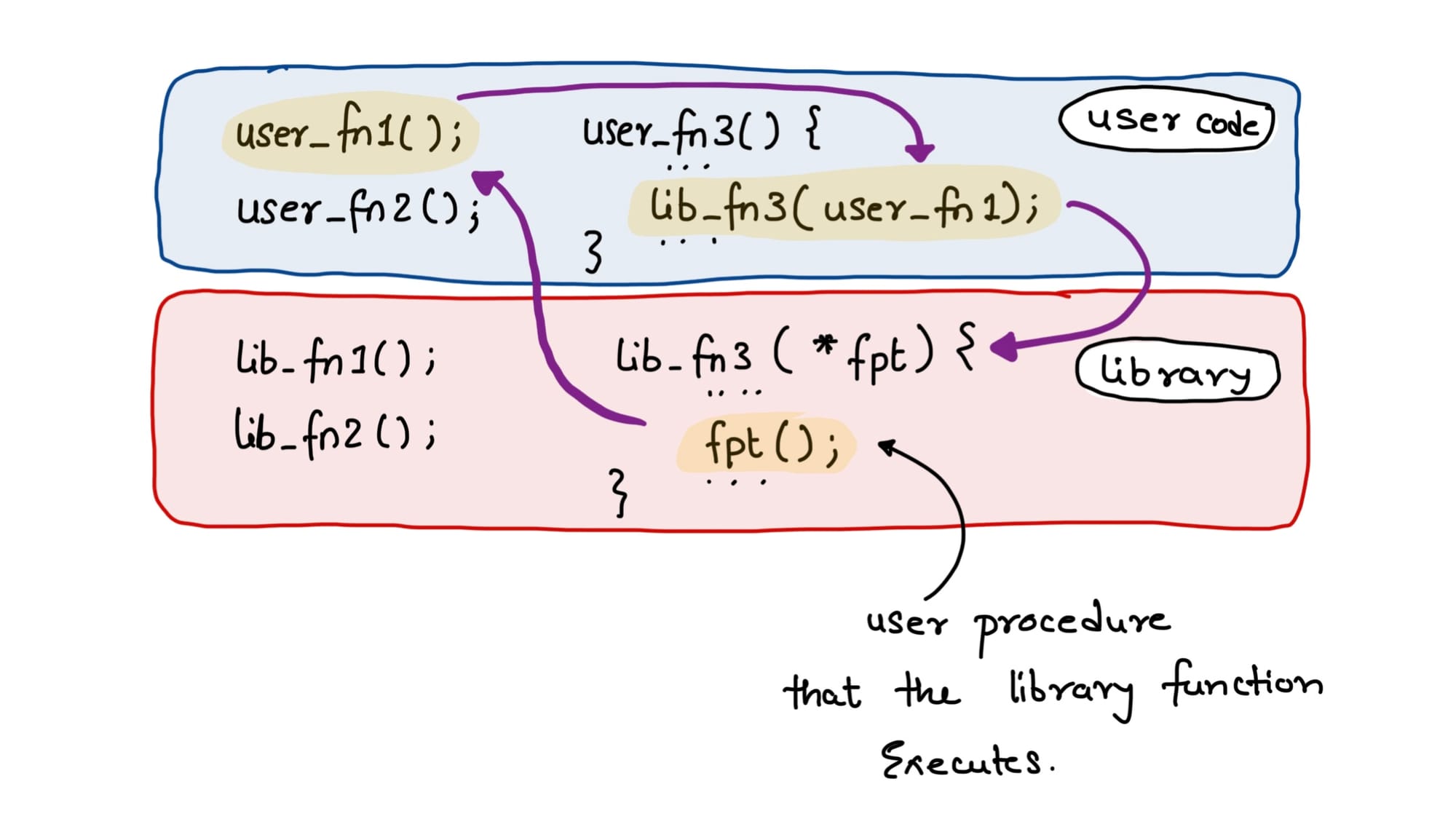
Consider typedef void (*function_ptr_t)(void); to be the function pointer type. Because of the typedef keyword, the function_ptr_t is treated like a new type. As per this definition, the pointer is to return nothing and takes no parameters. Try the following code -
#include <stdio.h>
typedef void (*function_ptr_t)(void);
void random_function(void) {
printf("Hello, World!\n");
}
int main() {
function_ptr_t fptr = random_function;
fptr();
return 0;
}main.c!
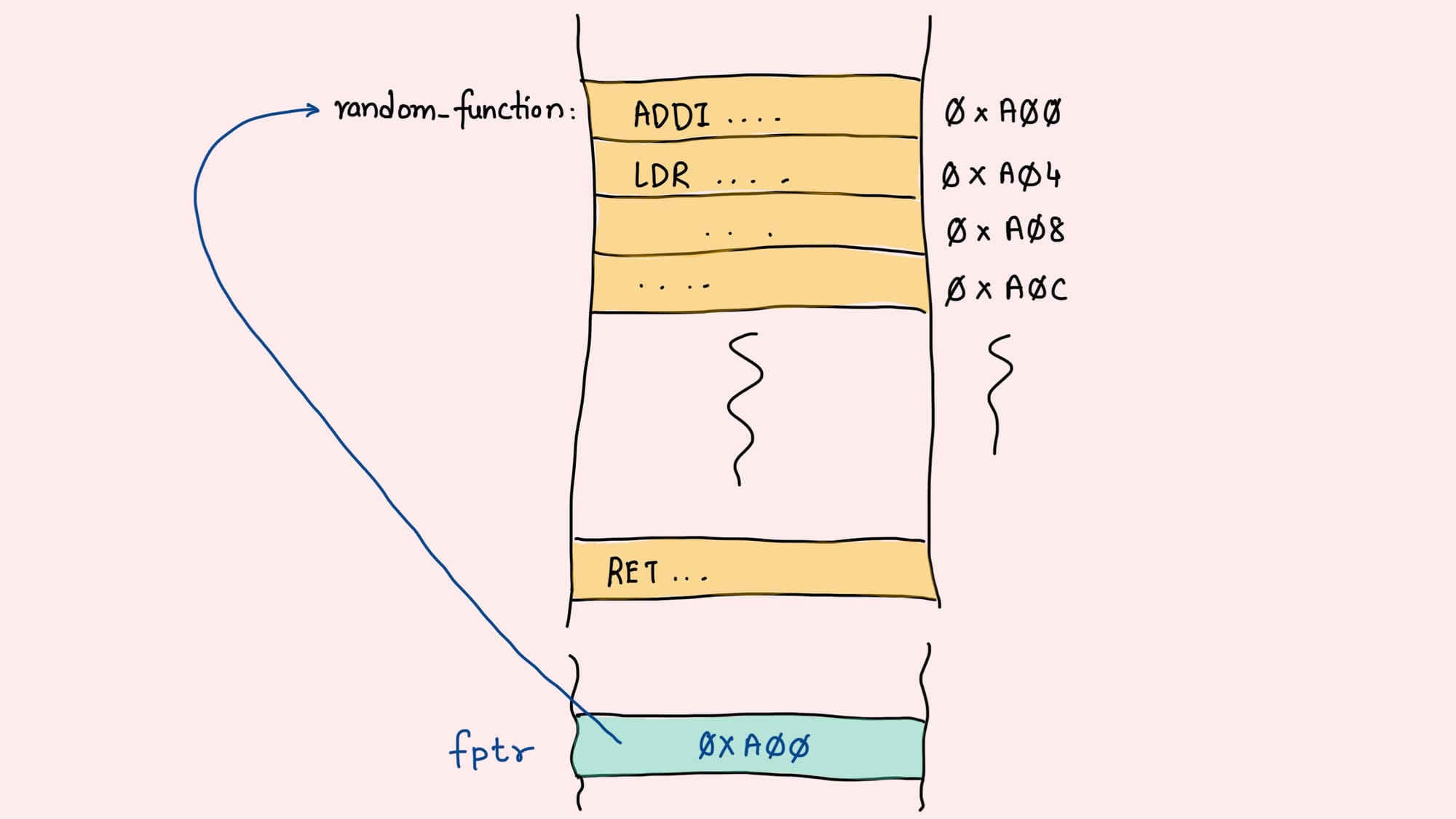
The output should be - Hello, World!. What happened here was, the fptr variable was of the type function_ptr_t which is a function pointer type. The fptr was pointing to the address where the code of random_function was saved. When we dereference the pointer with the syntax - fptr() the address is loaded into the program counter and the CPU fetches the instructions to execute.
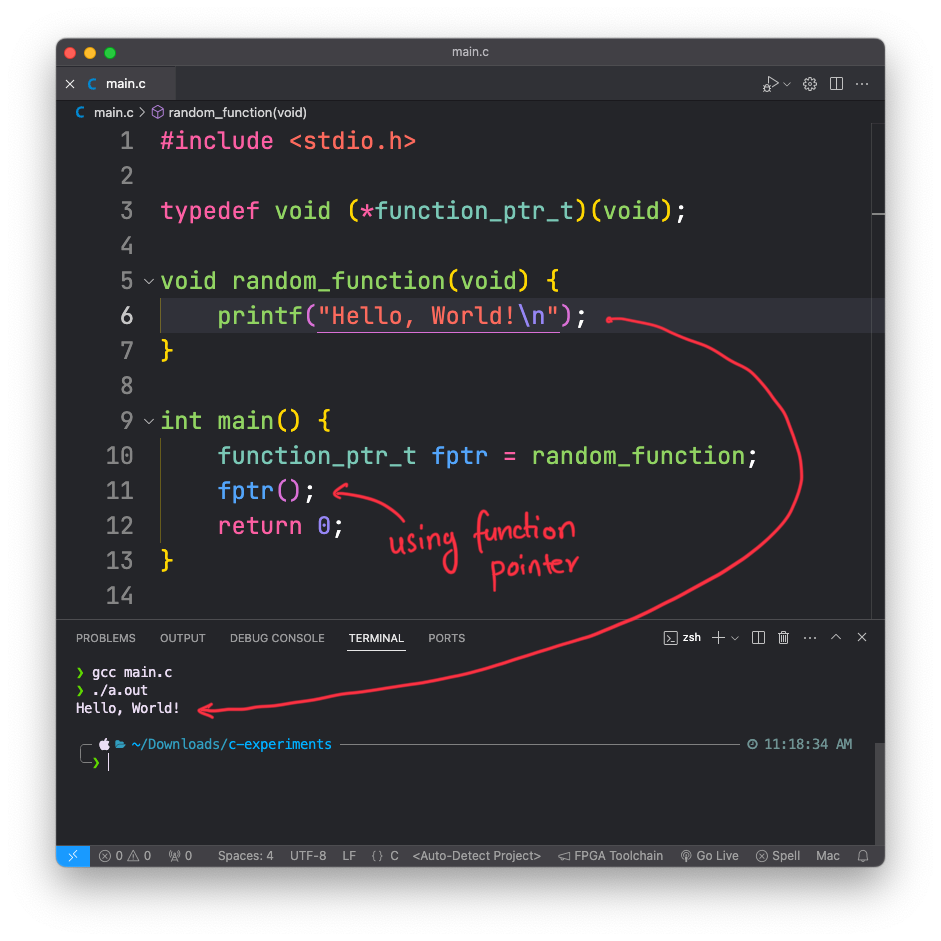
Hopefully, you are convinced how a function pointer works. Now let's look at some more details and use cases.
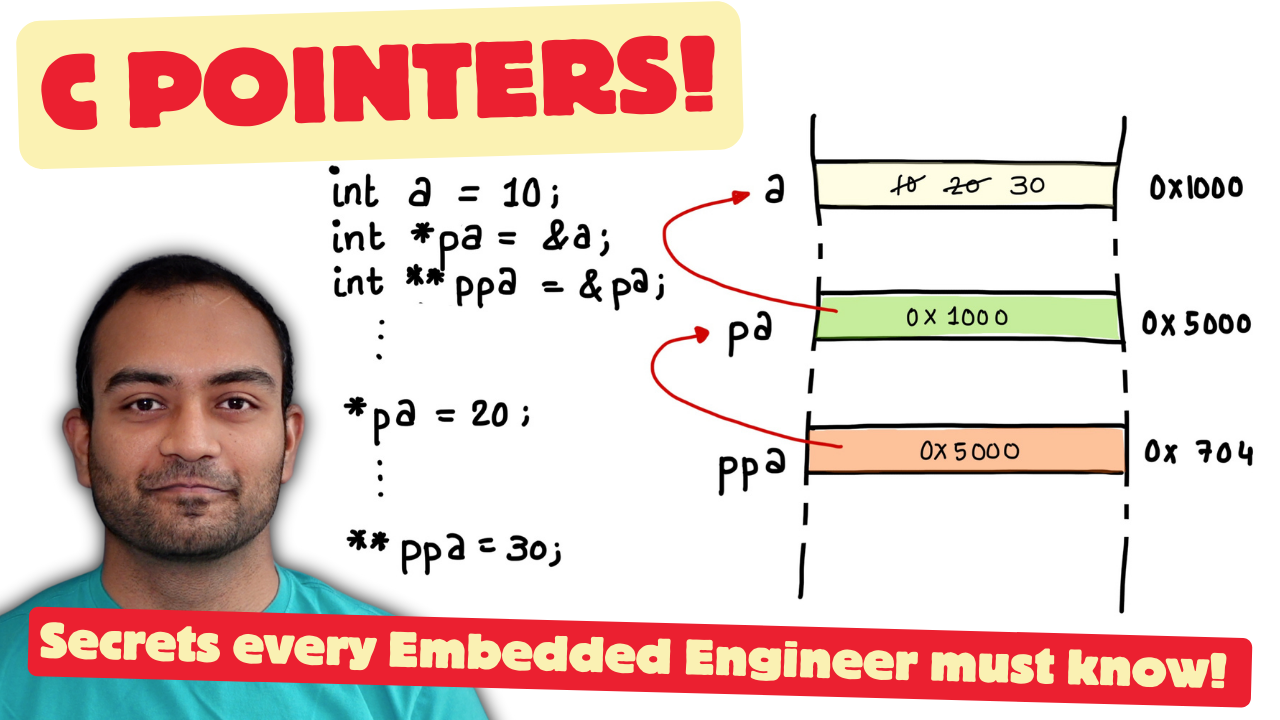
C Pointers: Secrets every Embedded Engineer must know!
This course will enable you to think and use pointers like a professional senior/staff engineer in ~6Hrs - Ways to
- Visualize
- Think,
- Reason, and
- Design
Using pointers as experts do. The course takes a detailed hands-on approach, explaining the code, the theory, and the underlying system details one should consider when dealing with pointers in C. It is full of graphics, annotation and hands on demo that the students can try along in GitHub Codespaces.
More Details: https://inpyjama.com/c-pointers-course/
The Syntax
The general syntax is return type (* function pointer name)(parameter list). The function/code being pointed to should have the same return type and parameters. For example, the snippets below add has the same return types and parameter list as fn.
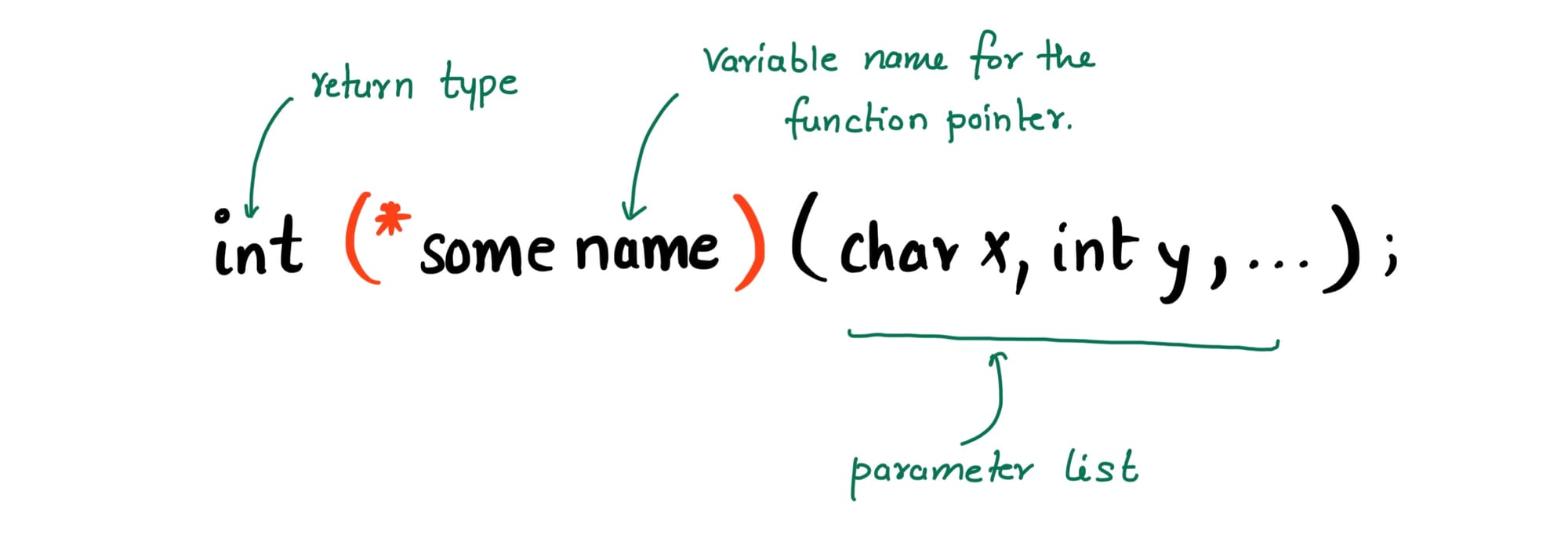
(* and ) around a function name makes it a function pointer :)Without typedef
Using typedef is not strictly required, if we decide not to use it, the function pointer variable declaration will be as in the code below. Notice how the syntax is long and hard to read.
#include <stdio.h>
int add(int x, int y) {
return x + y;
}
int main() {
int (*fn)(int a, int b) = add;
printf("1 + 2 = %d\n", fn(1, 3));
return 0;
}without typedef

With typedef
typedef will create a new type for us which happens to be called fn. We can use fn just like any other data type, as used to define fpt. This as you see, is more readable.
#include <stdio.h>
typedef int (*fn)(int a, int b);
int add(int x, int y) {
return x + y;
}
int main() {
fn fpt = add;
printf("1 + 2 = %d\n", fpt(1, 3));
return 0;
}with typedef we create a new type called fn and use that to create the pointer variable fpt.

When to use function pointers?
Let's recall how software abstraction works -
- Abstract the repeated lines of code as functions/procedures.
- Abstract the functions related to a set of related operations as a library.
- The user calls the functions from the library to get things done.
If this looks right, the next question we should ask is - what happens if a library function depends on a procedure to be supplied by the user? In such a case, we have an option between not creating the library and letting the user write the full function (which is bad) or providing a way for the user to pass the function/procedure to be executed to the library function - this is where we use function pointers!

Example: Interrupt Handlers
Such design philosophy is used in Event Driven programs and message passing. In the world of embedded systems the best example is that of - Interrupt handlers in the device drivers.
- The OS (say, Linnux) provides interrupt management library, which provides a way to register an interrupt handler.
- The device driver writer (the user of the interrupt management library) will need to provide a way to handle a given interrupt that is related to the device.
- The library provides a function like -
register_interrupt_handler(interrupt_no, interrupt_handler)that the user can use to tell what function to call when the given interrupt happens.
Say, a device driver code does something like so - register_interrupt_handler(49, irq_49_handler);. Meaning that, if the interrupt handler library detected that interrupt 49 has occurred, it should call the function irq_49_handler(). This is also depicted in the image below -
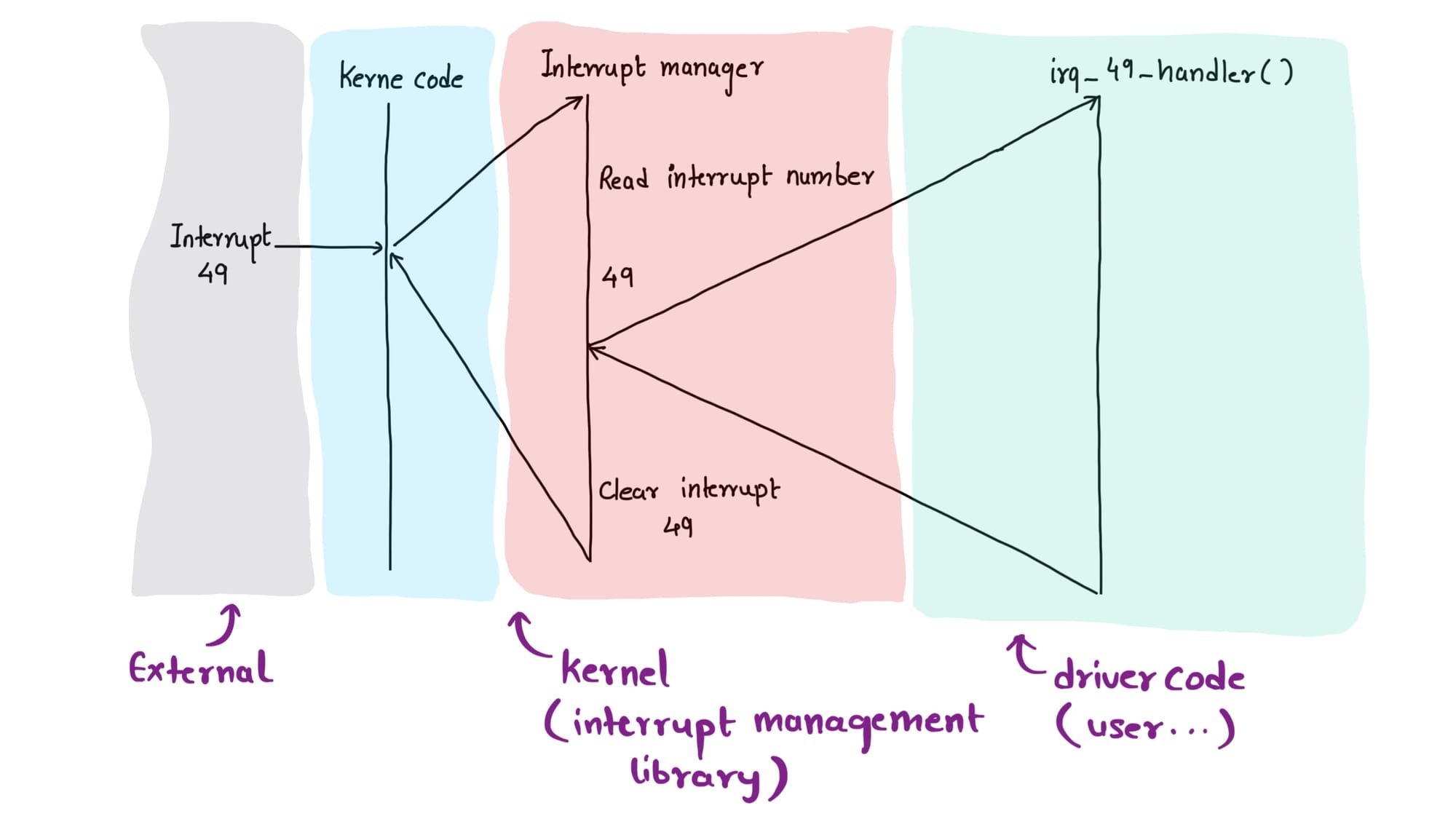
Notice that, the interrupt management library, once any interrupt occurs, just reads the interrupt number and then calls the corresponding registered function pointer - the interrupt handler. After the handler execution is complete, it clears the interrupt. The key is -
Learn more about pointers
Hopefully, this post gave you a good idea of what function pointers are. If you want to master pointers and learn more we have a complete course that guides on all the details of how pointers (and function pointers) work, how to visualize them and use them. You can check the course here:

C Pointers: Secrets every Embedded Engineer must know!
This course will enable you to think and use pointers like a professional senior/staff engineer in ~6Hrs - Ways to
- Visualize
- Think,
- Reason, and
- Design
Using pointers as experts do. The course takes a detailed hands-on approach, explaining the code, the theory, and the underlying system details one should consider when dealing with pointers in C. It is full of graphics, annotation and hands on demo that the students can try along in GitHub Codespaces.
More Details: https://inpyjama.com/c-pointers-course/

Discussion